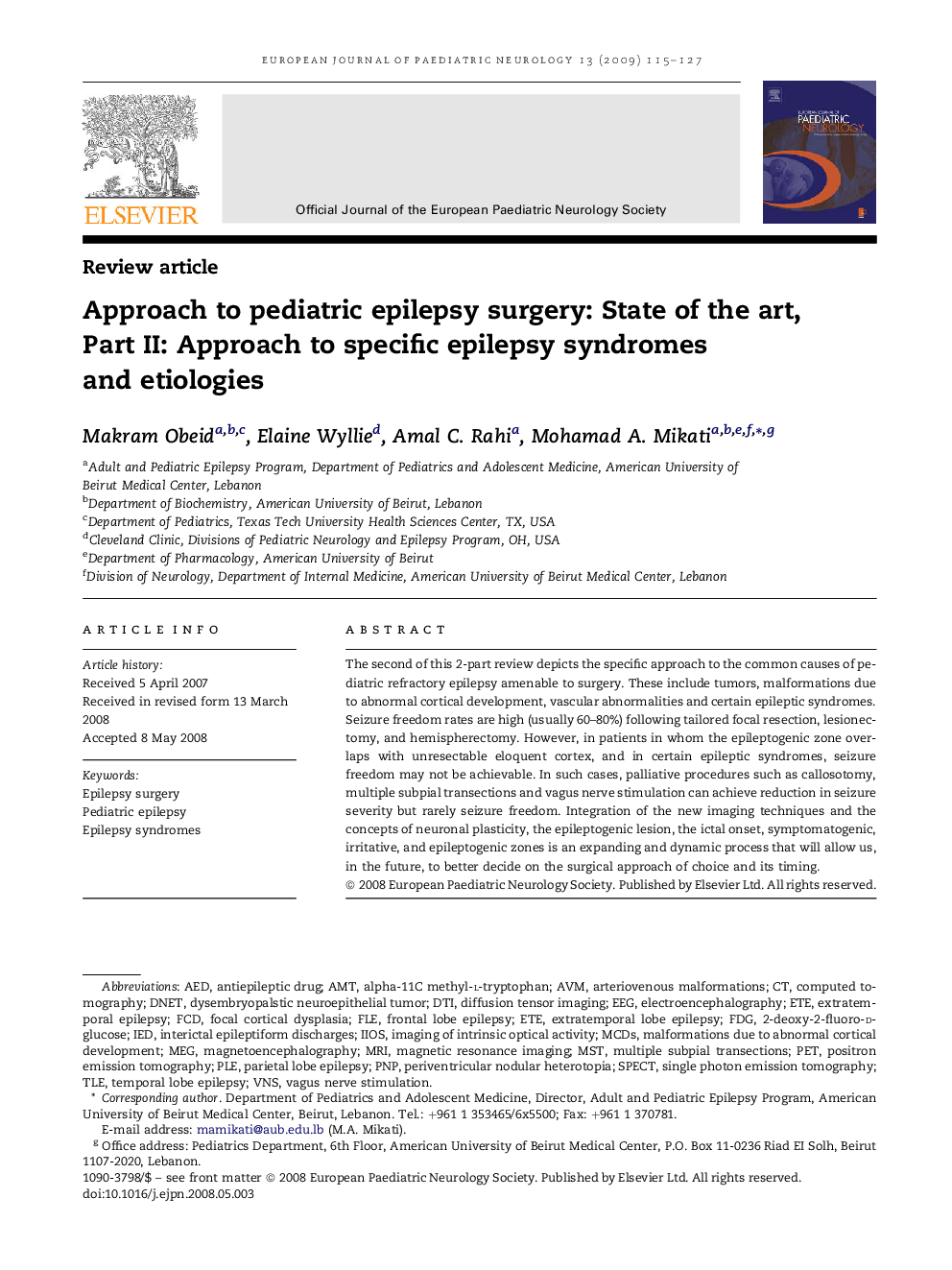| Article ID | Journal | Published Year | Pages | File Type |
|---|---|---|---|---|
| 3054618 | European Journal of Paediatric Neurology | 2009 | 13 Pages |
The second of this 2-part review depicts the specific approach to the common causes of pediatric refractory epilepsy amenable to surgery. These include tumors, malformations due to abnormal cortical development, vascular abnormalities and certain epileptic syndromes. Seizure freedom rates are high (usually 60–80%) following tailored focal resection, lesionectomy, and hemispherectomy. However, in patients in whom the epileptogenic zone overlaps with unresectable eloquent cortex, and in certain epileptic syndromes, seizure freedom may not be achievable. In such cases, palliative procedures such as callosotomy, multiple subpial transections and vagus nerve stimulation can achieve reduction in seizure severity but rarely seizure freedom. Integration of the new imaging techniques and the concepts of neuronal plasticity, the epileptogenic lesion, the ictal onset, symptomatogenic, irritative, and epileptogenic zones is an expanding and dynamic process that will allow us, in the future, to better decide on the surgical approach of choice and its timing.
